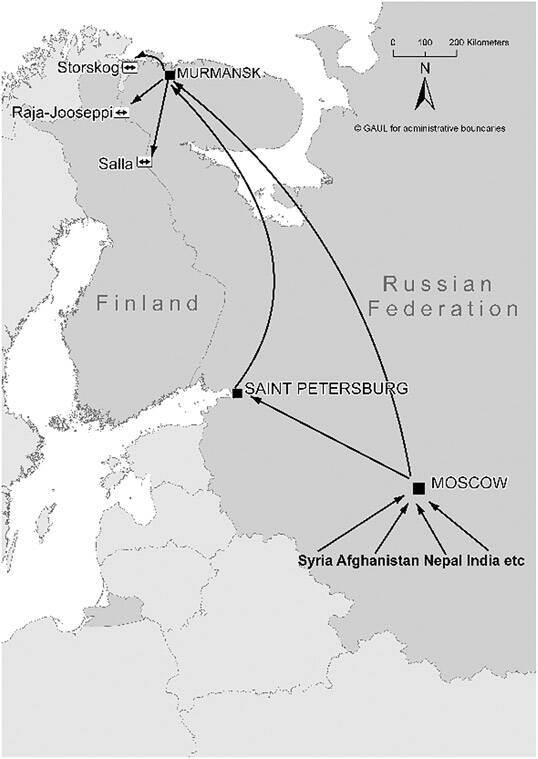Asian Studies Examples
Example 1

Caption
Figure 6.1 Internal migration in India, 1971–2011. Source: Census reports.
Alt Text
Alternative Text
Three lines show similar trends from 1971 to 2011. Specific lines show: Female 1971 at 43.1; 1981 at 43.9; 1991 at 41.2; 2001 at 44.6; and 2011 at 53.2. Total 1971 at 30.6; 1981 at 30.3; 1991 at 27.4; 2001 at 30.6; and 2011 at 37.4. Male 1971 at 19; 1981 at 17.6; 1991 at 14.6; 2001 at 17.5; and 2011 at 22.6.
Source [Open Access]
Hans, A., Kannabiran, K., Mohanty, M., and Pushpendra, (Eds.). (2021). Migration, Workers, and Fundamental Freedoms: Pandemic Vulnerabilities and States of Exception in India (1st ed.). Routledge India. https://doi.org/10.4324/9781003145509
Example 2

Caption
Figure 6.2 Distribution of internal migrants by type of movement. Source: De, Supriyo 2019.
Alt Text
Dual set of pie charts. The one titled 2001 has Intra-district at 63%, Inter state at 13%, and Inter district at 24%. The one titled 2011 has Intra-district at 62%, Inter state at 12%, and Inter district at 26%.
Source [Permission]
De, Supriyo, 2019. Internal Migration in India Grows, But Inter-State Movements Remain Low Retrieved from https://blogs.worldbank.org/peoplemove/internal-migration-india-grows-inter-state-movements-remain-low. Accessed on 12 October 2020.
Example 3

Caption
Figure 10.1 The Arctic route through Moscow to the North, 2015–2016.
Alt Text
A 200 Kilometer scale map of eastern Europe, the western part of Russia, and Scandinavia; entries for Syria, Afghanistan, Nepal, India, etc. have lines pointing to Moscow, which has a line going to Murmansk in the far north, and to Saint Petersburg in the mid-west, which then follows onto Murmansk as well. From Murmansk arrows go to the Finland border the crossing points of Storskog in the far north, Raja-Jooseppi a bit further south, and Salla further south but still in the top one-quarter of the Finnish territory.
Source [Open Access]
Turaeva, R., & Urinboyev, R. (Eds.). (2021). Labour, Mobility and Informal Practices in Russia, Central Asia and Eastern Europe: Power, Institutions and Mobile Actors in Transnational Space (1st ed.). Routledge. https://doi.org/10.4324/9781003176763
